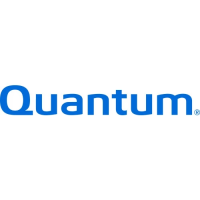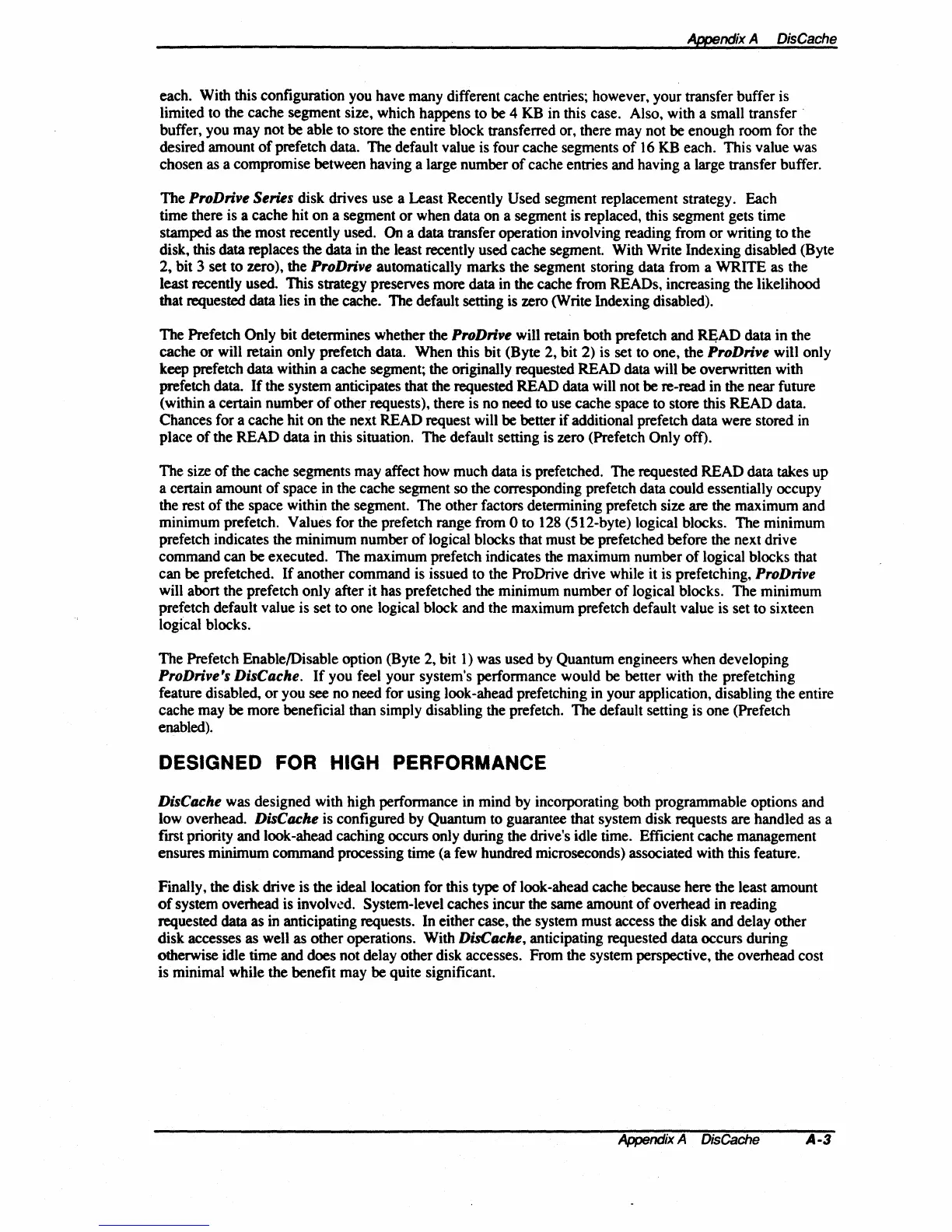Appendix A DisCache
each. With this configuration you have many different cache entries; however, your transfer buffer is
limited to the cache segment size, which happens to be 4 KB in this case. Also, with a small transfer .
buffer, you may not be able to store the entire block transferred or, there may not be enough room for the
desired amount
of
prefetch data. The default value is four cache segments
of
16
KB each. This value was
chosen as a compromise between having a large number
of
cache entries and having a large transfer buffer.
The
ProDrive Series disk drives use a Least Recently Used segment replacement strategy. Each
time there is a cache hit
on
a segment
or
when data on a segment is replaced, this segment gets time
stamped as the most recently used.
On
a data transfer operation involving reading from
or
writing
to
the
disk, this data replaces the data in the least recently used cache segment. With Write Indexing disabled (Byte
2, bit 3 set to zero), the ProDrive automatically marks the segment storing data from a WRITE as the
least recently used. This strategy preserves more data in the cache from READs, increasing the likelihood
that requested data lies in the cache. The default setting is zero (Write Indexing disabled).
The Prefetch Only bit determines whether the
ProDrive will retain both prefetch and
RE;AD
data in the
cache
or
will retain only prefetch data. When this bit (Byte 2, bit 2) is set to one, the ProDrive will only
keep prefetch data within a cache segment; the originally requested READ data will be overwritten with
prefetch data.
If
the system anticipates that the requested READ data will not be re-read in the near future
(within a certain number
of
other requests), there is no need to use cache space to store this READ data.
Chances for a cache hit on the next READ request will be better
if
additional prefetch data were stored in
place
of
the READ data in this situation. The default setting is zero (Prefetch Only off).
The size
of
the cache segments may affect how much data is prefetched. The requested READ data takes up
a certain amount
of
space in the cache segment so the corresponding prefetch data could essentially occupy
the rest
of
the space within the segment. The other factors detennining prefetch size are the maximum and
minimum prefetch. Values for the prefetch range from 0 to 128 (512-byte) logical blocks. The minimum
prefetch indicates the minimum number
of
logical blocks that must
be
prefetched before the next drive
command can be executed. The maximum prefetch indicates the maximum number
of
logical blocks that
can be prefetched.
If
another command is issued to the ProDrive drive while it is prefetching,
ProD
rive
will abort the prefetch only after it has prefetched the minimum number
of
logical blocks. The minimum
prefetch default value is set to one logical block and the maximum prefetch default value is set to sixteen
logical blocks.
The Prefetch EnableIDisable option (Byte 2, bit
1)
was used by Quantum engineers when developing
ProDrive's DisCache.
If
you feel your system's performance would be better with the prefetching
feature disabled,
or
you see no need for using look -ahead prefetching in your application, disabling the entire
cache may be more beneficial than simply disabling the prefetch. The default setting is one (Prefetch
enabled).
DESIGNED FOR HIGH PERFORMANCE
DisCache was designed with high performance in mind by incorporating both programmable options and
low overhead.
DisCache is configured by Quantum to guarantee that system disk requests are handled as a
fIrst priority and look-ahead caching occurs only during the drive's idle time. Efficient cache management
ensures minimum command processing time (a few hundred microseconds) associated with this feature.
Finally, the disk drive is the ideal location for this type
of
look-ahead cache because here the least amount
of
system overhead is
involv~d.
System-level caches incur the same amount
of
overhead in reading
requested data as in anticipating requests. In either case, the system must access the disk and delay other
disk accesses as well as other operations. With
DisCache, anticipating requested data occurs during
otherwise idle time and does not delay other disk accesses. From the system perspective, the overhead cost
is minimal while the benefit may be quite significant.
Appendix A DisCache
A-3

